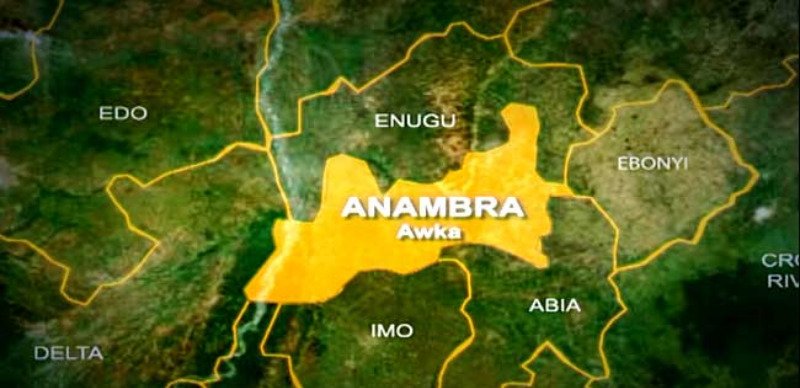
When one of the largest airports in Nigeria, Anambra International Cargo and Passenger Airport, successfully concluded its maiden test flights on April 30, 2021, the feat was described as “a dream come true.” The dream of building an airport in Anambra conceived 30 years ago was faithfully fulfilled by a man with a resolute and clear ambition.
A visit to the four major airports in Nigeria and other state airports will make you conclude that the Anambra airport is indeed a treasure bestowed upon the people. It is a symbol of a man who stood against all odds. Having received several cautions, discouragements and backlash from people, Governor Willie Obiano knew this was a project that had to be accomplished. Building the airport was considered a dream too big to accomplish; a mountain too great to climb; a river too deep to swim.
Yet, as though living up to his Akpokuedike title, Obiano arose like a warrior and delivered his people when they most needed him. By so doing, he has gone beyond where all his predecessors dared.
Anyone who had an opportunity to look at the Anambra airport project between 2017 and 2018 would have predicted it would fail. However, by 2019, Obiano resolved that the project must go on and mobilise the necessary financial and technical capacity.
Thanks to the dedication and hard work of many men and women, who walked along the governor’s vision, the airport’s construction officially began in January 2020. Incidentally, the Coronavirus disease lockdown and restrictions of that year became a blessing in disguise as the governor effectively quarantined men and materials at the airport site in Umueri, such that they worked night and day for practically 15 months without interruption.
Obiano’s zeal and commitment to finishing what he started were attested to by those who rode with him. He brought comfort amid anxiety; assurance amid uncertainty, and gave no one any justification at all for feeling worn out.
For the sake of clarity, it is crucial that we understand what makes a man like Obiano a great leader. Prior to Obiano’s administration, two administrations had started the project and subsequently passed the baton down the line but Obiano carried it to completion. Four parcels of land—Parcel A, Parcel B, Parcel C and Parcel D—were initially acquired for the airport site under the administrations of governors Chris Ngige and Peter Obi. It was Obiano that paid the final settlement for the acquisition of the balance of Parcel B, the land on which most of the airport was built, in two instalments. Nine contractors and nine service providers tirelessly worked together to build the airport.
The first plane that landed at the airport on April 30, 2021 was a Boeing 737 from Chief Allen Onyema’s Air Peace fleet. Alighting from the plane, Onyema, a Nigerian lawyer and entrepreneur from Anambra, was moved to tears as he embraced Obiano on the tarmac. The significance of that moment was not lost on the thousands of Ndi Anambra gathered around the plane. Here was the owner of the largest airline in the country having the opportunity to fly his plane to his home state for the first time ever.
The Anambra International Cargo and Passenger Airport is in Category 4F, meaning that an Airbus A380 aircraft can land comfortably in it. The runway is the second longest in Nigeria with a length of 3.7km and an end safety area of one kilometre at both ends, a width of 60m and a strip of 440m on either side.
It is equipped with Instrument Landing System, which ensures that aircraft are vertically and horizontally aligned with the runway while landing. With two taxiways, the airport’s apron measures 300m by 200m—enough to accommodate eight Boeing 747 aircraft at the same time—and is built on a rigid reinforced concrete pavement measuring 5560mm in thickness.
The apron is built to repel water. So, even when it rains, water runs off the surface easily. The concrete control tower, which stands at 34.5m (height of an 11-storey building), the tallest in Nigeria, has nine suspended floors and is equipped with a fireproof elevator and staircase. It is also equipped with biometric security doors. Every room in the tower, and indeed the entire airport, is equipped with a water sprinkler.
The airport has two access roads. The first and significant airport road measures about 5.7km and connects the Onitsha–Enugu expressway. It is a dual carriageway road with a bridge on either side. The road has drainage channels on both sides and is clearly marked and fitted with streetlights.
The airport has a four-storey terminal building with shops and a car park that can accommodate 750 vehicles.
Little wonder that thousands of elated Anambra people gathered at Umueri that fateful Friday, April 30, 2021 to witness the successful test-landing of four aircraft at the airport. Two of these aircraft were commercial planes, belonging to Air Peace. The other two were private jets, one of which brought Chief Ernest Obiejesi and his friends while the other brought Prince Ike Chioke and his wife among other guests.
It was a memorable day, as history was made. According to the Commissioner for Works, Marcel Ifediofor, it was indeed a dream come true, while highlighting the efforts put into the project.
His words, “It is a credit to all of us, but the major credit goes to Governor Willie Obiano for his support, morally and financially, to make sure we got to this stage.”
His address included how contractors and service providers worked on the project, day and night, for 15 months unscathed, as well as how 500 machines and over 50 trucks were utilised and not a single accident was recorded.
“It is wonderful because safety is number one. Any contractor that takes safety seriously is a good contractor. This is really a dream come true because instead of going elsewhere to clear goods, we now have the facilities at our backyard,” he added.
Like every true leader, Obiano, in his eloquence, explained why the Anambra airport project was indeed worthy of note.
“The most interesting thing about this airport is that we did not borrow a kobo to build it. This, in itself, is a record in leadership. Our dream of an airport started almost 30 years ago when the government of Anambra acquired 530 hectares of land in Oba, Idemili South Local Council, with the intention of building an airport, but that never materialised. That dream is fulfilled today.
“We began the airport to expand the frontiers of excellence in Anambra seven years ago. We announced that our mission was to make Anambra the first choice in investment destination and a hub for economic and commercial activities,” he said.
Attesting to the brainchild, Onyema acknowledged how Anambra airport was one of the fastest airports to be approved by the Federal Government based solely on the quality of work done.
“What we have is the widest runway ever in Nigeria and it can land an Airbus 380, which is the largest aircraft. This is the first time an airline in Nigeria did a test-run with Boeing 737,” he also said.
The Anambra airport serves as a reminder that we should not let criticism divert our attention from the success that comes from perseverance. The fact that the airport saw 3,865 people land and take off on 142 flights in the first month, after it was opened, is eloquent proof of its success.
A representative of Ndi Anambra, Obiano understood his assignment, which made his critics, enemies and naysayers finally come to understand that “Okiriki ka a na-agba ukwu ose; a dighi ari ya nu.”
Ajayi writes from Lagos





